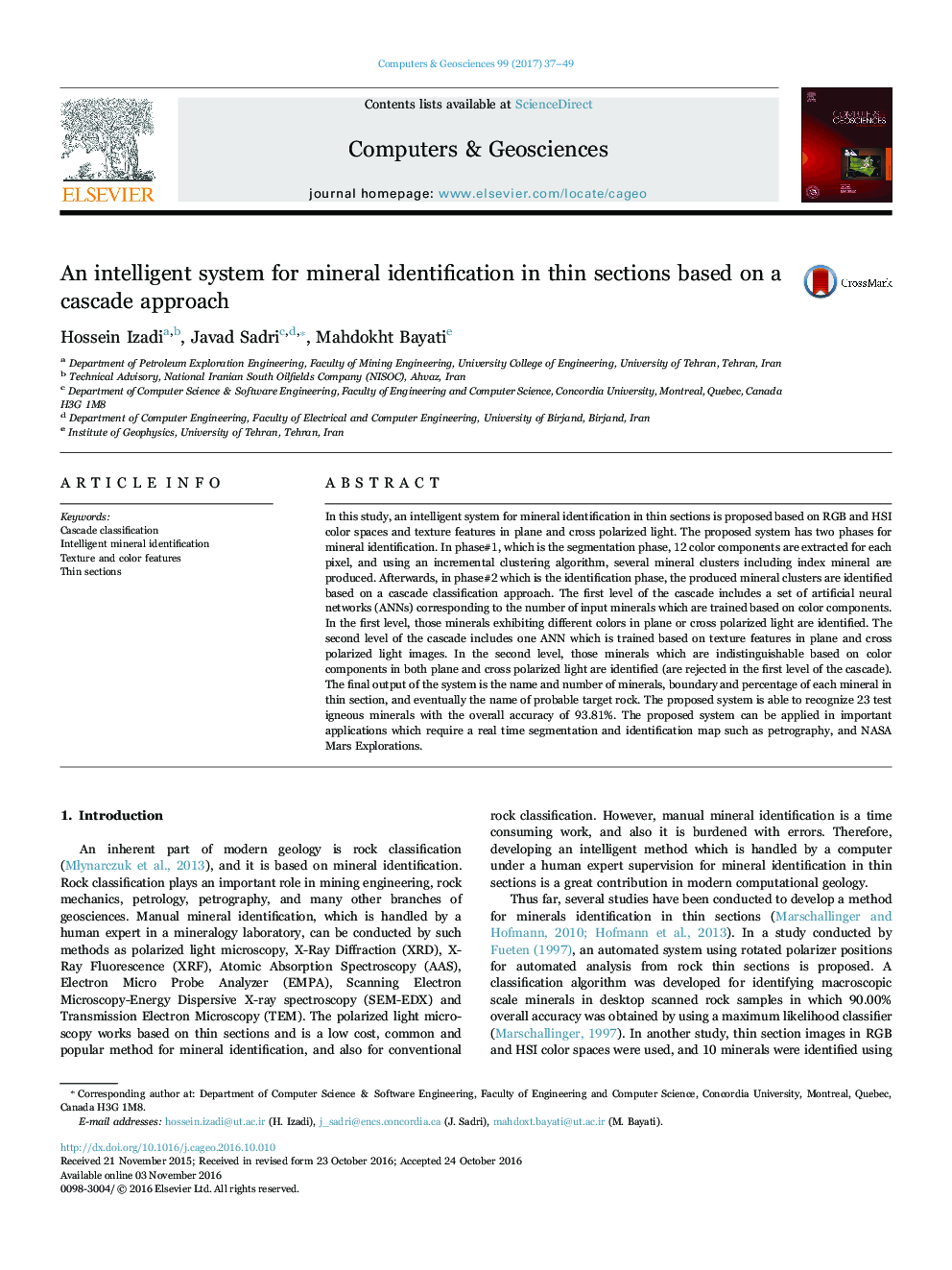| Article ID | Journal | Published Year | Pages | File Type |
|---|---|---|---|---|
| 4965451 | Computers & Geosciences | 2017 | 13 Pages |
Abstract
In this study, an intelligent system for mineral identification in thin sections is proposed based on RGB and HSI color spaces and texture features in plane and cross polarized light. The proposed system has two phases for mineral identification. In phase#1, which is the segmentation phase, 12 color components are extracted for each pixel, and using an incremental clustering algorithm, several mineral clusters including index mineral are produced. Afterwards, in phase#2 which is the identification phase, the produced mineral clusters are identified based on a cascade classification approach. The first level of the cascade includes a set of artificial neural networks (ANNs) corresponding to the number of input minerals which are trained based on color components. In the first level, those minerals exhibiting different colors in plane or cross polarized light are identified. The second level of the cascade includes one ANN which is trained based on texture features in plane and cross polarized light images. In the second level, those minerals which are indistinguishable based on color components in both plane and cross polarized light are identified (are rejected in the first level of the cascade). The final output of the system is the name and number of minerals, boundary and percentage of each mineral in thin section, and eventually the name of probable target rock. The proposed system is able to recognize 23 test igneous minerals with the overall accuracy of 93.81%. The proposed system can be applied in important applications which require a real time segmentation and identification map such as petrography, and NASA Mars Explorations.
Keywords
Related Topics
Physical Sciences and Engineering
Computer Science
Computer Science Applications
Authors
Hossein Izadi, Javad Sadri, Mahdokht Bayati,
